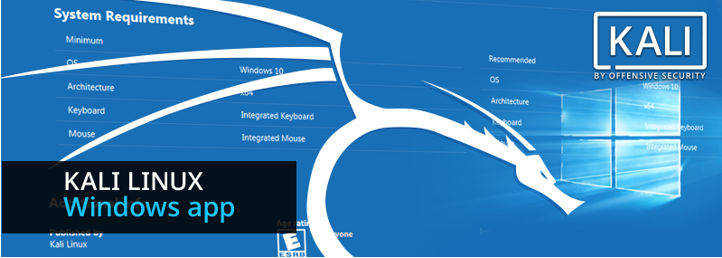

And I’ve been unsuccessfully wrestling with how to install all the default tools and the default menu so that the Windows-version matched the default version 100%. Note: The only huge caveat is that the default Windows version doesn’t have all the cool tools automatically installed and it doesn’t come up with the cool menu. Literally a minute or two to install and seconds to fire up anytime you want to use it. Imagine my surprise to find out that it’s very, very easy to run Kali Linux on Windows as an official Windows app. It contains a ton of great tools all pointed to by a nice, graphical menu.

Kali Linux has become the defacto standard for hackers who want to do penetration testing work but don’t want to have to “roll their own” all the time.

I’ve been a long time fan of OpenBSD ( ), Qubes ( ), and Kali Linux ( ). If you’re any type of hacker you’ll find yourself running a Linux or BSD distro of some sort. I find myself using it for quick tests versus firing up my more complete VM software for quick little tests. Windows 10 Sandbox has its issues, such as every time you re-start it you start from scratch (or nearly scratch…there are a few things you can do to help with persistence), but it’s hard to beat how quick and easy it is to use. I recently wrote () about how easy it is with Windows 10 to get another disposable Windows 10 image running in a few seconds. I run Windows 10 as my main computer so much of my testing is in Microsoft Windows. I’m constantly firing up virtual machines (VMs) to test various phishing email links and attachments. I was excited to learn how easy it was to get Kali Linux running on Windows as an official Windows app.


 0 kommentar(er)
0 kommentar(er)
